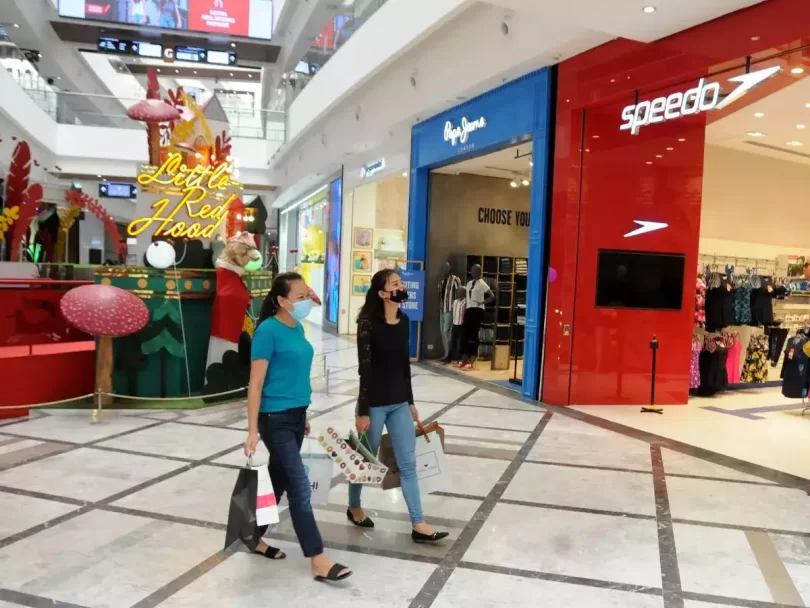[ad_1]
- Brick and mortar retail to grow at 14-16% this fiscal, driven by continued expansion across segments – food, grocery, apparel and consumer durables, says a CRISIL report.
- Retailers’ capex is expected to go up by 8-10% this year, led by apparel segment.
- These store additions will drive revenue growth of 18-20% this fiscal year, the report says.
- Retailers are planning small format stores in tier 2, 3 and 4 cities.
In just two years of almost losing the battle to e-commerce players and the pandemic, physical retailers in India are making a spectacular comeback. One of India’s largest retailers DMart has added 50 new stores last year – it’s highest ever.
Many more retailers are hitting the historic store-addition highs. For instance Domino’s, run by Jubilant FoodWorks in India, opened 58 new stores across 12 cities in the first quarter of this year. At least ten top retailers have said that they are looking at rapid expansion.
“Brick-and-mortar retail to grow at 14-16% this fiscal, driven by continued expansion across segments – food, grocery, apparel and consumer durables – and return to normalcy from the Covid-19 pandemic,” said a research report by CRISIL. In the last fiscal, store expansion was higher at 21%, the report noted.
These store additions will drive revenue growth of 18-20% this fiscal year and the full impact of the expansion will be seen in the next few years.
The investments by retailers are expected to go up by 8-10% this year, with the apparel segment expected to lead this growth. “Companies stated that a strong recovery was witnessed during the (first) quarter on the back of improved footfalls and receding impact of Covid. As a result, companies are now resuming with their store expansion plans,” said a report by Motilal Oswal.
CRISIL also said that the credit metrics of retailers support their expansion plans. “The credit ratio moderated in FY21 reflecting pandemic impact. Waning of pandemic-related disruptions resulted in sharp recovery in FY22,” it said.
Brick-and-mortar expands online too
However, not all their expanded investments will go into physical stores, as most of them are keen on providing a hybrid experience.
Brick-and-mortar retailers are growing their online presence with apps, warehouses and more – likely fuelling growth in e-retailing as well. Last year, e-retailing grew at 26%, and this year, it’s poised to grow anywhere between 27-32%, according to CRISIL.
The rating agency also said that omnichannel strategy will be the way forward as lower footfalls in stores can be compensated by higher online sales. Retail footfalls are still at 85-90% of their pre-pandemic levels .
“Stores can display limited inventory. Hence, an omnichannel is a must,” the report said. Retailers will tend to push last-season merchandise online at higher discounts.
Table: Expansion plans of top retailers
| Retailer | Store additions/ other growth plans |
| DMart | Plans to add 135 stores by March 2024 |
| Aditya Birla Fashion | Already added 7 stores in July. Plans to add over 70 stores in FY23. |
| Titan | Plans to add 35-40 Tanishq stores in FY23 if they find suitable properties. |
| V-Mart | Plans to add over 60 stores in FY23 |
| Westlife Development | Has 12 McDonald stores under construction and on-track to add 35-40 in FY23 |
| Devyani International | Target is to add over 100 KFCs and Pizza Huts each, and over 40 Costa Coffees in FY23. |
| Restaurant Brands Asia | Plans to have 390 Burger Kings in India by FY23 – effectively adding over 100 stores |
| Barbeque Nation | Added 10 outlets so far and on track to add 35-40 outlets this year. Will also add 5 Toscano stores this year. Plans to launch a delivery-only Biryani brand, this year |
Source: Motilal Oswal research report
Focus on franchising, tier II, III & IV cities
Retailers are also pivoting to franchising, though they will earn around 5% less profit from such stores. “Retailers are willing to part with that owing to lower risk and disproportionate gain from increasing brand awareness,” the CRISIL report said.
Major store additions are also planned in tier II, III and IV cities, where retail penetration is lower than the national average that stands at 0.8 stores per million people.
“Different store formats are being adopted in tier II and tier III cities. Usually, the store size is much smaller. Favourable rental costs, higher demand from private labels make tier II and tier III cities more attractive for driving sustainable growth,” the CRISIL report said, quoting excerpts from a webinar with retailers.
SEE ALSO :
Asus Zenbook S 13 OLED review – a sleek all-purpose ultrabook at a premium
Tomato flu cases spread to Haryana, Tamil Nadu and Odisha — Know more about this contagious disease
[ad_2]
Source link








